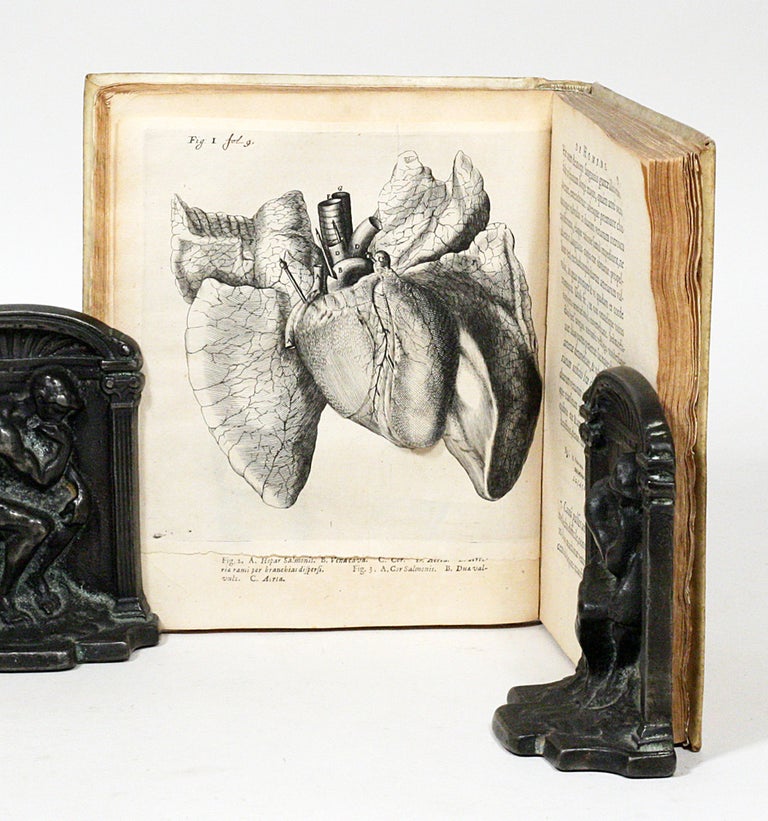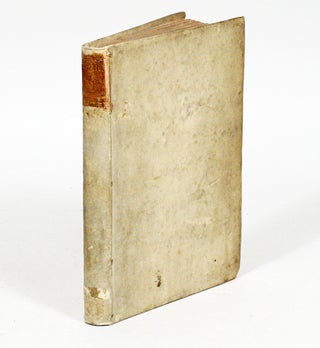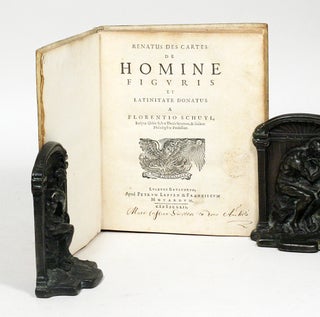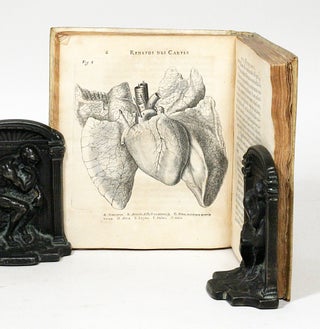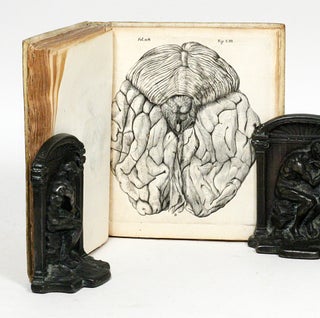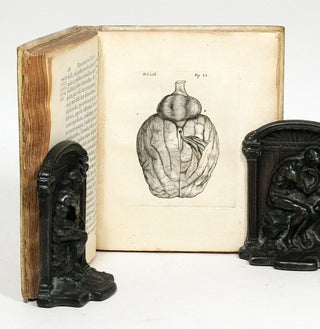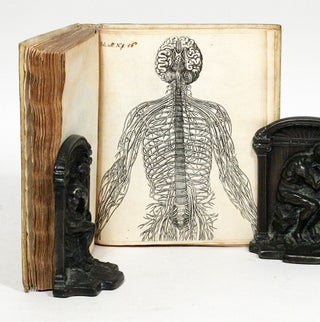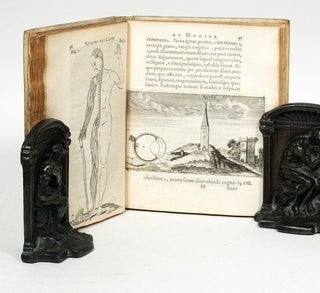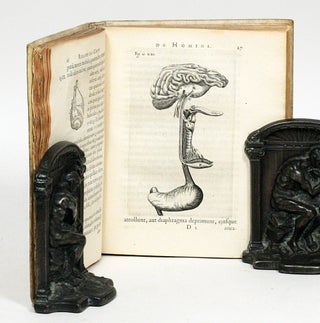De Homine
"The work was based upon Descartes' concept of 'l'homme machine', an automaton constructed by God to approximate real men as closely as possible; by means of this literary device Descartes was able to avoid the restrictions and encumbrances of traditional physiology and theology, and to explain all physical motions, except for deliberately wilful, rational or self-conscious behavior, in purely mechanical terms" -Norman
"Without Descartes, the seventeenth-century mechanization of physiological conceptions would have been inconceivable" -Dictionary of Scientific Biography
“Descartes considered the human body a material machine, directed by a rational soul located in the pineal body. This book was the first attempt to cover the whole field of ‘animal physiology.'” -Garrison-Morton 574
FIRST EDITION OF THE FIRST TEXTBOOK OF PHYSIOLOGY.
“René Descartes’s Treatise of man (De homine, 1662; Traité de l’homme, 1664) was never intended to stand as a work on its own. It was one part of a much larger work, Le monde (The world). Although this was finished around 1633, Descartes did not publish it himself because he was alarmed by the Italian Inquisition’s condemnation of Galileo Galilei that year. Some time after Descartes’s death in 1650, his French manuscript, copies of which had circulated among his friends and correspondents, was edited and published. The first version was a Latin translation (De homine) by Florentius Schuyl in 1662, the second the now better known ‘original’ French version (Traité de l’homme) edited by Descartes’s self-appointed literary executor Claude Clerselier in 1664. In the seventeenth century the 1662 Latin version was probably much more widely read than the French text" (Donaldson, J R Coll Physicians Edinb 2009; 39:375–6). Heirs of Hippocrates, 295. Garrison-Morton 574.
With 10 engraved plates; with 2 lift-up flaps on plate depicting the heart, but without flap on plate of the brain (as usual); numerous full-page and text engravings and woodcuts. Inscribed on title to Mart. Christian Sweerts, "ex dono Autoris". The "author" in this case is most likely the translator Schuyl.
De homine figuris et latinitate donatus a Florentio Schuyl. Leyden: Peter Leffen & Francis Moyard, 1662. Small quarto, contemporary vellum with leather spine label. Evidence of old label at base of spine. Remnants of old stamp on title, occasional very light browning to margins. A beautiful copy.
Price: $11,000 .


